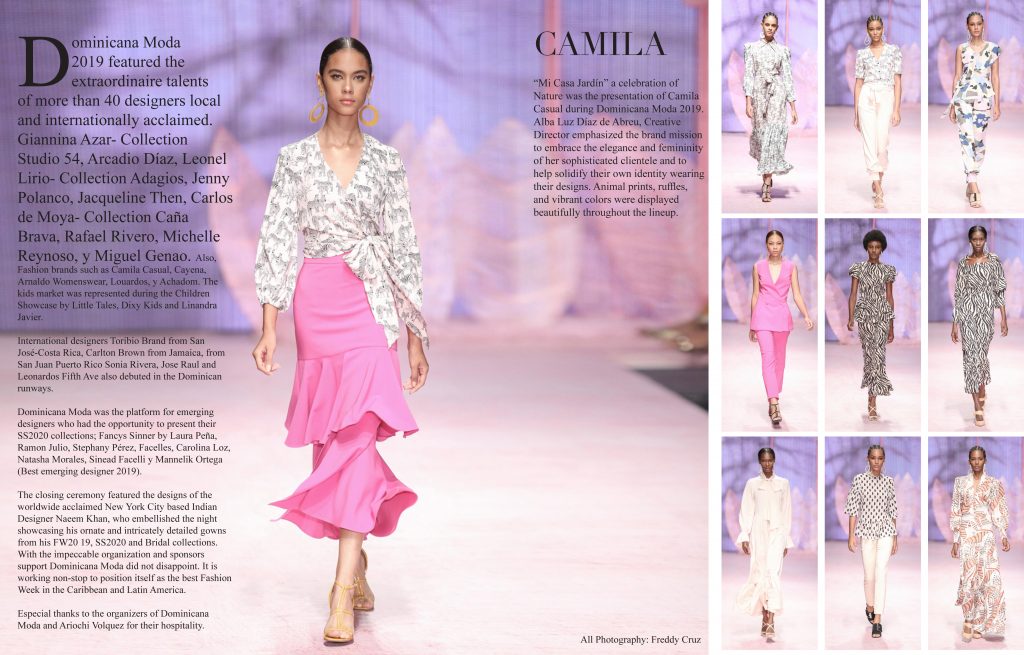The World Health Organization (WHO) recently stated that Europe is now officially a Covid-19 (also called, “novel coronavirus”) pandemic region. With the total number of cases still climbing exponentially, national governments across the world have tighten their domestic policies by adopting and enforcing various measures to “flatten the curve” (i.e. soft or extreme self-quarantine or social distancing).
Far more concerning for fashion industry related companies though, the impact of this virus has been projected by expert observers to last until next year.[i] In order to survive in this novel business environment, they will have to make transformative and take consequential decisions. This self-evident conclusion has already been broached superficially in other recent publications.[ii] While expending and clarifying further on these points, this article forecasts that the fashion industry will be different in three ways in the post Covid-19 crisis period.
The first transformative change is the acceleration in the digitalisation of the fashion industry. Whereas the previous digitalisation efforts were done partially or on the margins, this crisis will force fashion industry related companies to innovate every aspect of their digitalisation conceptualisation. Acting as a catalyst, the impacts of the crisis finally provides the justification for fashion industry related companies to entirely digitalise their business models. Those companies who have already fully applied a “digital business model” will have had an early head start in the behind-the-scene “digital competition” currently happening during this crisis.[iii] As a consequence, those companies who have not yet began to transform will need to quickly catch up before they lose customers to those companies who have already underwent this transformation.
Most fashion industry related companies presently possess a “traditional business model with digital elements.” In the post-crisis environment though, these companies will need to acquire a “digital business model with traditional elements.” An example of the former is Zara, who mostly holds a physical existence through countless shops around the world with retention of an online digital sales platform and digital marketing. An example of the latter is Anna+Nina, who mostly holds an online existence through an online digital sales platform and digital marketing with retention of a limited physical presence. In the past, the prime business model was fashion industry related companies moving from the digital to physical presence, whereas now, the reverse is true, companies should move from the former to the latter. One solution is for companies to acquire a “complete digital presence without gaps” in their traditional business model. This means, companies possess encompassing digital services from top to bottom: use of digital software to identify target-customers, develop market strategies for product sells, offer purchase options, effect after-service notices, and analyse each steps in the process.
In more practical terms though, the steps that fall under “encompassing digital services” will only be the initial ones towards acquiring this aforementioned business model, because these steps will quickly become the “new normal.” The utmost underlying issue still remains the same, how can a fashion industry related company truly show both established and potential customers that it is in possession of the customers’ desired product without them first physically sensing the product?
The physical gap between online customers and digital fashion industry related companies explains why the transition towards complete digital presence without gaps should not be interpreted as panacea for all profit losses gotten during this crisis. On top of the structural downside of the digital world, there remains seriously unpredictable external issues that are beyond the reach of the respective companies, like global supply chain issues with delivery systems. Moreover, adoption of this business model does not mean that fashion industry related companies should forget the value of the physical presence of a store. Acting in a complementary manner rather than as a supplanting feature, the transition towards a complete online presence without gaps business model will help companies save cost by reducing the size of their physical stores all the whilst putting greater funds into the design layouts. This will have the effect of turning the stores into showrooms – even in some cases, quasi art museums – with only limited stock clothes.[iv]The traditional retail sales associates will transition as fashion consultants with further assistance of available online fashion consultants and virtual dressing functions. [v]
The second change in the post Covid-19 crisis period is crystallization of the “less is more revolution” in the fashion world. Although there was wavering on the “sustainability question” prior to the crisis, the question is finally answered – sustainability is officially in. Already prior to the health crisis there was indication that the fashion industry was mobilizing this way. First, a plethora of designers had showcased and emphasised longevity, wearability and minimalism during the most recent 2020/21 fashion week.[vi] Second, both the return and popularity of 1980s and 90s styles across the fashion industry signalled more than merely the arrival of a new trend like previous “look-backs,” but symbolised a desire to “recycle” the past.[vii] In other words, the customers were already expressing the “mechanisms of sustainability,” albeit effected in a subconscious manner.
Over the medium term, therefore, concepts like clothing rental subscription, capsule wardrobes, vintage clothing will augment in popularity. Accordingly, fashion industry related companies each must come to adopt a precise definition for “sustainable fashion.”[viii]Whether they communicate with other companies or consult other associations to establish such a definition is superfluous. The real concern is that a set of standards for sustainability in the industry is actually formulated in order to overcome the hurdles that have historically prevented its introduction. Once the definition is widely accepted, fashion industry related companies will have to focus on producing fewer collections and highlighting high-quality, creative products that no longer seek to grab people’s attention, but rather demonstrate the true beauty of fashion.[ix]
The central relevancy of sustainability will not deter the surfacing of trends. The customer behaviour of buying large amounts of clothes in an effort of following fast changing trends is too difficult to unlearn, especially for younger customers who were conditioned in this environment.[x] Towards effecting both sustainability and trends, companies can establish a line of vintage shopping or introduce new collections that are designed out of recycled clothes that customers returned through take back programmes.[xi] Those programmes should provide incentives and expedited processes for customers so as to solve the issue of inconvenience in the sending back of vintage and used clothes.
Additionally, the utilization of new material or fabric will be a game changer. With the acceleration of global warming, companies need to be more concern in investing into new fabrics. Those companies that perform research on fabric might have the triple effect of cutting costs, increasing profits, and saving the environment. For instance, Yve Saint Laurent (YSL) produced a collection using latex in an effort to redefine “sexy luxury,” while Moncler created a new collection with glow-in-the-dark snowsuits that could be charged by natural light.[xii]
In a reciprocative and mutually dependent way, the push for sustainability from fashion industry leaders coincides with a new era of “conscious consumer purchasing.”[xiii] Future customers will take into consideration whether the germane brand reflects their values and beliefs and honours the environment. This requires companies to communicate (with the use of marketing and branding) to consumers through the lens of sustainable fashion, while, in turn, demands consumers to communicate (with the use of feedback) to companies through the precise explication of what they hope to see in the future. This also avoids the miscommunication between brands and consumers which leads to excess inventory that ultimately end up in landfills.
The third change is a return to increased investment on creative directors and talent designers. Over the past recent years, trends have evolved so rapidly that fashion designers, in general, have had no time to fully explore their creative and wondrous minds in product development. Moreover, talent designers were oftentimes recruited to produce “logo-products” to affect a strong marketing focus that would lead to high profit. The dominance of marketing over creative design led to the serious questioning of the utility of creative directors. The focus on sustainability however up-ends the centrality of “marketing-led trends” and, with it, the dominance of the marketers. In the post Covid-19 crisis period, designers will actually be able to focus on producing high quality, aesthetic and unique products.[xiv] Only them, and not marketing executives, will be able to produce products that differentiate their brands from others, deliver strong and meaningful messages, and inspire customers to once again pursue beauty in fashion. As the saying goes, “in the midst of every crisis, lies great opportunity.” This crisis is no different. It provides the perfect covering for fashion industry related companies to reflect and carry-out internal transformative changes to prosper on the other side of the crisis.
[i] Huber, E., 2020. Coronavirus Will Have Long-Term Effects on The Fashion Industry. [online] Refinery29. Available at: <https://www.refinery29.com/en-us/2020/03/9538062/long-term-effects-coronavirus-fashion-industry> [Accessed 11 March 2020].
[ii] Peng, A., Baum, C., Brown, P. and Gerstell, E., 2020. Perspectives for North America’s Fashion Industry in A Time Of Crisis. [online] McKinsey & Company. Available at: <https://www.mckinsey.com/industries/retail/our-insights/perspectives-for-north-americas-fashion-industry-in-a-time-of-crisis> [Accessed 1 March 2020].
[iii] Richards, G. and Iansiti, M., 2020. Coronavirus Is Widening the Corporate Digital Divide. [online] Harvard Business Review. Available at: <https://hbr.org/2020/03/coronavirus-is-widening-the-corporate-digital-divide> [Accessed 26 March 2020].
[iv] Elven, M., 2018. Store, Café or Art Gallery? The Rise and Rise of The Concept Store. [online] FashionUnited. Available at: <https://fashionunited.com/news/retail/store-cafe-or-art-gallery-the-rise-and-rise-of-the-concept-store/2018080722729> [Accessed 21 February 2020].
[v] Lieber, C., 2020. To Launch or Not to Launch? For New Direct-To-Consumer Brands, That Is the Big Question. [online] The Business of Fashion. Available at: <https://www.businessoffashion.com/articles/professional/coronavirus-direct-to-consumer-startups-fashion> [Accessed 27 March 2020] and Meepl. 2020. Virtual Dressing Room with Personal 3D Body Avatar. [online] Available at: <https://www.meepl.com/solutions/virtual-dressing-room> [Accessed 10 April 2020].
[vi] O’Connor, T., 2020. 5 Key Takeaways from Milan Fashion Week. [online] The Business of Fashion. Available at: <https://www.businessoffashion.com/articles/professional/5-key-takeaways-from-milan-fashion-week-spring-summer-2020> [Accessed 2 March 2020].
[vii] Eggertsen, L., 2020. My Mom Wore These 9 Trends in the ’80S, And Now I Do Too. [online] Who What Wear UK. Available at: <https://www.whowhatwear.co.uk/80s-clothing-trends/slide2> [Accessed 7 April 2020].
[viii] Cheng, A., 2019. More Consumers Want Sustainable Fashion, But Are Brands Delivering It?. [online] Forbes. Available at: <https://www.forbes.com/sites/andriacheng/2019/10/17/more-consumers-want-sustainable-fashion-but-are-brands-delivering-it/#4fb736d934a5> [Accessed 5 February 2020].
[ix] Flaccavento, A., 2020. What Will Become Of Fashion When The Epidemic Is Over?. [online] The Business of Fashion. Available at: <https://www.businessoffashion.com/articles/opinion/what-will-become-of-fashion-when-the-epidemic-is-over> [Accessed 24 March 2020].
[x] Lawrence, D., 2019. Fast Fashion And Environmentalism: Clashing Trends?. [online] News Decoder. Available at: <https://news-decoder.com/2019/11/25/fashion-climate-change/> [Accessed 10 January 2020].
[xi] Urban Outfitters. 2020. Curated Vintage Clothing. [online] Available at: <https://www.urbanoutfitters.com/curated-vintage-clothing> [Accessed 4 March 2020]; Omisakin, J., 2018. 13 Recycled and Upcycled Clothing Brands You Shouldn’t Pass In 2019 – Compare Ethics. [online] Compare Ethics. Available at: <https://compareethics.com/9-recycled-and-upcycled-clothing-brands-you-shouldnt-pass-in-2018/> [Accessed 23 March 2020]; and, Wicker, A., 2019. Fashion’s Growing Interest in Recycling Clothing. [online] Vogue Business. Available at: <https://www.voguebusiness.com/companies/fashion-brands-recycling-upcycling-resale-takeback-sustainability> [Accessed 16 February 2020].
[xii] Davidson, E., 2020. Saint Laurent Wants You to Slither into Some Latex Next Season. [online] Dazed. Available at: <https://www.dazeddigital.com/fashion/article/48112/1/saint-laurent-wants-you-to-slither-into-some-latex-next-season-pfw-aw20> [Accessed 2 February 2020].
[xiii] Jain, S., 2020. COVID-19 Outbreak: Implications for Luxury Industry In 2020 And Beyond. [online] Business Today. Available at: <https://www.businesstoday.in/opinion/columns/coronavirus-in-india-covid-19-outbreak-implications-for-luxury-industry-in-2020-business/story/399002.html> [Accessed 23 March 2020].
[xiv] See ix.









